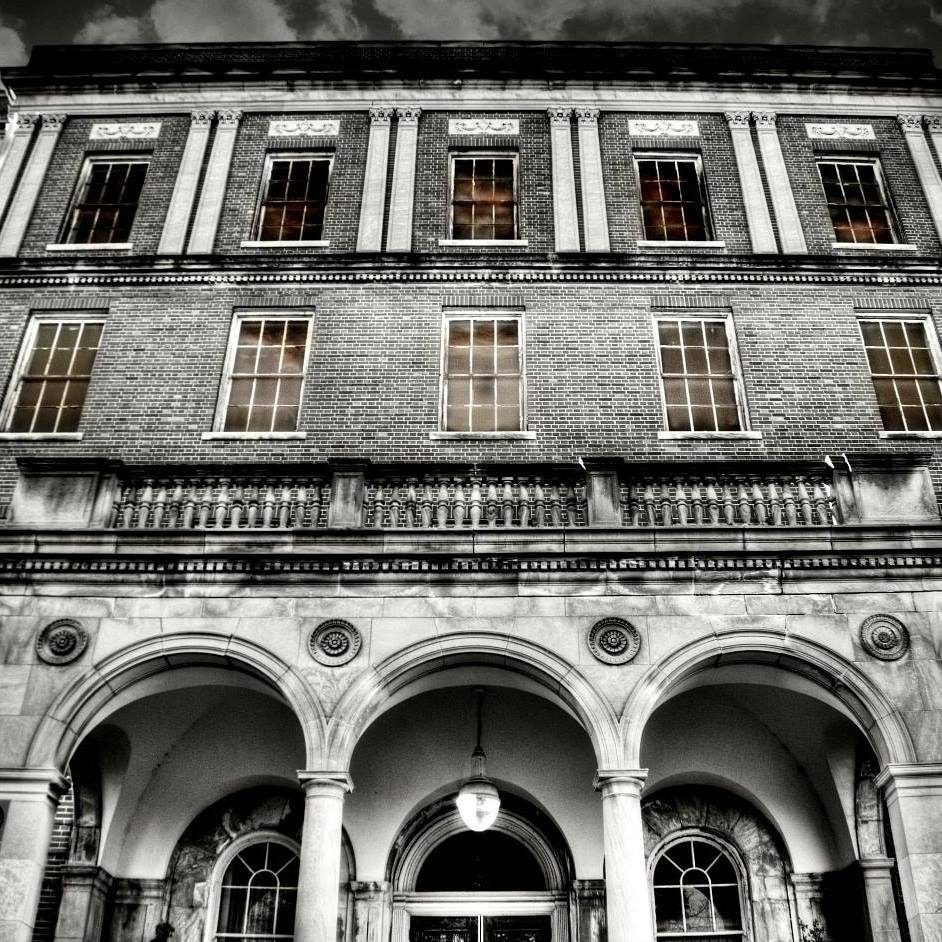

Power Plant, 1924, after the previous Boiler House was gradually dismantled as the new one was built around it. You may recognize this building, as it is one of the original buildings still left standing on the grounds of Eloise.
A bond issue was floated in 1922; and by July, 1923, work had proceeded on the new construction of a new power plant . The logical site would have been that of the old plant, but since the old plant had to be used until the new one was ready, it was decided to erect the new building entirely around the old one, gradually dismantling the latter as the work progressed.

A new smokestack was constructed 200 feet high, radial in form, 17 feet in diameter at the bottom, and 12 feet in diameter at the top. The wall was 28 inches thick at the bottom and 8-5/8 inches at the top, with a top opening of 11 feet. The new plant building was 150 feet long, was 88 feet deep, and rose five stories in the rear. It was divided in sections – the north one for the boilers, the south one for the generators, several auxiliary generators, pumps, tanks, and other equipment. The coal dump cars were brought in over the trestle and dumped into hoppers in back of the plant, and the coal was sent by gravity into a conveyor. The conveyor carried the coal into the top of the building and dumped it into hoppers above the boilers.
The electrical equipment in the generator room consisted of three reciprocating engines, each directly connected to a Westinghouse alternator. Total accumulation of the engines was 1,000 horsepower, and the alternators were rated at 850 KVA.
In 1930 to 1931, an additional boiler and stoker were installed to meet demand occasioned by the erection of the “N” Building and new Administration Building (D). In 1935 a Hazen compressor was installed; and a draft regulator, on the boilers. In 1936 the Superintendents decided to install a water-softening system in the Boiler House. In the previous year, two boiler feed pumps, one electrical and one steam-driven, were installed.

In 1955 it was determined that an engineering study was needed of the Power Plant operation to decide whether electricity should be continued to be manufactured in the Plant; the recommendation of the preferred method of heating to be furnished in conjunction with the building program of a new general hospital building was to be made. The business manager also stated at that time that the boilers were 32 years old.
The F.O. Jorden Engineering Company was employed to make this study, and the H.E. Beyster Company was selected in September to undertake the modernization of the Power Plant. By March of the following year, steam generators with a capacity of 280,000 pounds of steam pressure, and two 1,500 kilowatt turban generators. By November of 1956, the engineering company reported that the physical construction program on the Powerhouse modernization would start in January, 1957. It was recommended that a 280,000 pound-per-hour boiler be installed along with a third 1,500 kilowatt turban generator and that the 1,500 kilowatt Edison standby service be increased to 3,000 kilowatts. By 1958 these additions had been acquired and installed, and the system was designed so as to be able to utilize gas or coal as its primary source of fuel.
No further modifications were necessary with the opening of the new Long Term Care Facility Building, particularly since this coincided with the closing of all the psychiatric buildings except “D” Building.
[ This information presented in whole from “A History of the Wayne County Infirmary, Psychiatric, and General Hospital Complex at Eloise, Michigan” by Alvin C. Clark; pages 106 -111. ]
